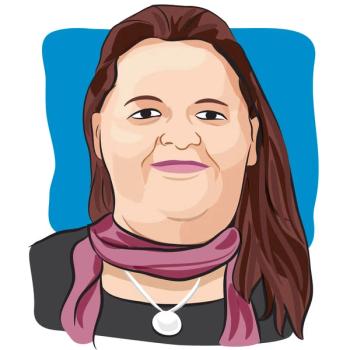
An update on the Cancer Genome Atlas for breast cancer
The final day of the San Antonio Breast Cancer Symposium began with an update from members of the working group of the Cancer Genome Atlas (TCGA) and International Genome Consortium (IGC) who are together embarking on a massive project to obtain broad scale gene sequencing, RNA profiles and functional protein information on breast tumors and to assemble a comprehensive database that can be immediately shared and "mined" to obtain important clues to the triggers of cancer and its vulnerabilities that can be exploited for therapy. The efforts in the breast cancer component of this project will eventually involve over 1000 cases and a very large team of scientists, bioinformaticians and clinical consultants. The sheer amount of data generated (3 billion base pairs for each tumor genome just for starters) is mind-boggling. But special data analytical tools and high-powered computers are able to generate patterns – a glimpse of this was presented in a progress report on Sunday, revealing some new insights. Most tumors contain several mutations, but only a few are commonly seen. The recurrent genetic abnormalities are presumed to be "drivers" – directly responsible for cancer behavior, while some are "passengers" – results of genetic instability and errors in DNA division and processing, but not affecting malignant potential. This is an important distinction, since drivers represent potential diagnostic markers and targets that are "druggable", and would only have been discovered through this extensive effort. The numbers and types of mutation seen are distinct among the recognized classes of breast cancer based on hormonal and HER2 receptor status. Also, the consequences of these mutations on cell function appear to be similarly grouped. The expression of genes and their translation into protein, which are the actually workhorses of cellular structure and function, are not only affected by gene mutations but also by "epigenetic" alterations. These are not picked up by gene sequencing, but rather by detecting attachments to certain base pairs of DNA and the proteins that help organize DNA into a useful template that orchestrates when and where genes are expressed. There is growing evidence that epigenetic changes may be the earliest events that set the stage for genetic mutations and modulation of the tissue microenvironment that help support cancer growth and spread. The field of epigenetic is rapidly growing and a few approved cancer drugs work through these mechanisms. At Sunday's session, a clearer map of epigenetic changes in the context of cancer subtypes began to emerge and this will undoubtedly provide a roadmap to better classification systems and treatment strategies.What was special about this session is the power of collaboration and large numbers. The tiny pixels are starting to come together to provide a landscape – and we all hope this will be transformative.





